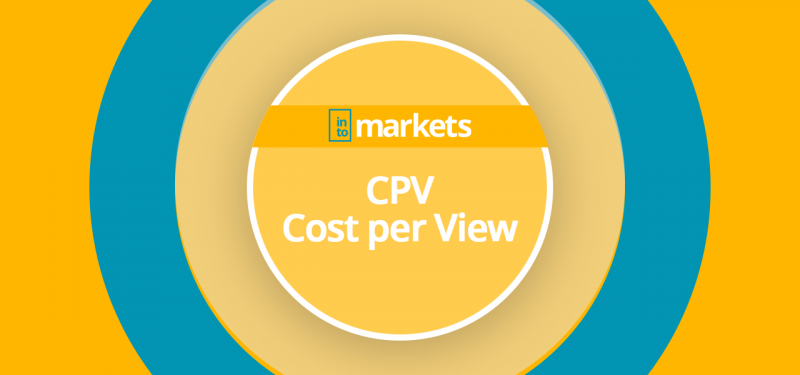What Is Cost per View, and What Are Its Advantages over Other Models?
Cost per View, CPV for short, is a term used in the video advertising field. CPV stands for a billing model which is mainly used in social media marketing and video marketing.
Similar to CPO (Cost per Order) or CPC (Cost per Click), this buying model requires a particular action from the user to be accounted for, this means that with the CPV model, a marketer only pays for the real visual contact of an ad. These “visual contacts” arise when a user voluntary opens an announcement, such as a video. Merely seeing a video appear while scrolling in the feed or timeline, on Facebook, for example, is not counted as an action.
The willingness to consume publicity is a significant advantage of the Cost per View buying model, as the risk of “Banner Blindness” is relatively low. The ads that the user does not find interesting are highly unlikely to be clicked and as a result, will not be billed with CPV.
CPV For Video Ads
Cost per View is often used for video displays; here, a click on options such as “Play,” “Skip,” or “Expand” can be considered as a view. However, it is essential to distinguish the buying model CPV from impression-based campaigns like Cost per Impression (CPI), because CPV requires an action from the user and not just a mere look. The CPV has the advantage that the advertiser can distinguish between those who have viewed a video and those who have not. As a publisher, you get a more in-depth insight into the user intention, i.e., the user commitment, which in turn represents a valuable database. This is a crucial advantage for performance-based campaigns to measure their advertising impact.
Another advantage of CPV is that you get more transparency from the data and can, therefore, budget better. After all, payment is only made for video insertions that were created directly by the user.
Disadvantages of the Cost per View Method
Unfortunately, there are also disadvantages with the Cost per View approach. For example, the case of viral videos in which a user watches it till the end and the advertiser is charged following the CPV model. This does not mean, however, that the user is interested in the products, services or brand offered in the video.
CPV is also not the ideal model for campaign goals such as brand awareness through branding campaigns since the long-term effects cannot be assessed.
CPV calculation example
Calculating the CPV is relatively simple. To do this, one takes the advertising costs incurred by the placement of the video and divides them by the total number of views that the contribution has received.
CPV calculation
Cost per View Example
Costs = 100,00 EUR
Views = 2,500
CPV = 0.04
100 EUR / 2.500 Views = 0,04 EUR
So if 100 € are spent on advertising costs and 2500 views are spent on a video, then the CPV is 0.04 €.
Cost per View in the Amazon DSP Network
Amazon’s Demand Side Platform (Amazon DSP) enables advertisers to buy display and video ads programmatically. This means that their ads can be displayed in image or video format on other websites. In contrast to the CPV billing model, in the DSP network, however, billing is based on CPM (cost per mille). This means that there is a fixed price for 1,000-page views. Thus, this type of buying is image-based.
The Amazon agency Intomarkets has been dealing with worldwide topics around Amazon for years. Our staff are SEO experts and are very familiar with keywords, product optimization, and advertising on Amazon. Billing models such as CPV, CPC, or CPO are the order of the day. You can find more information about advertising on Amazon optimization https://www.intomarkets.com/amazon-advertising/






